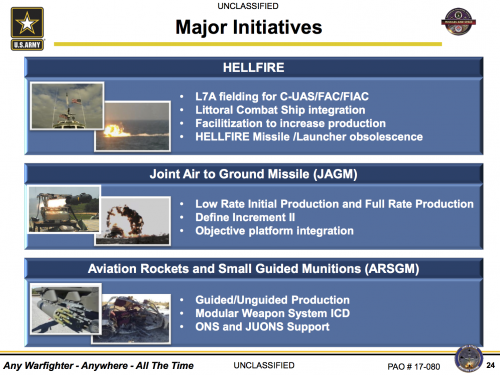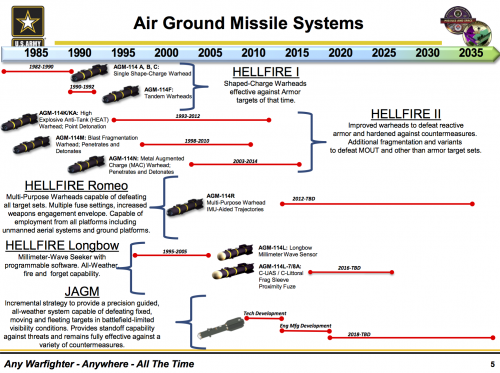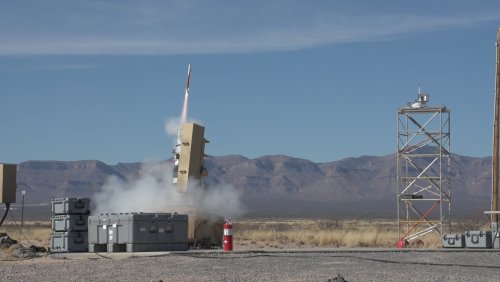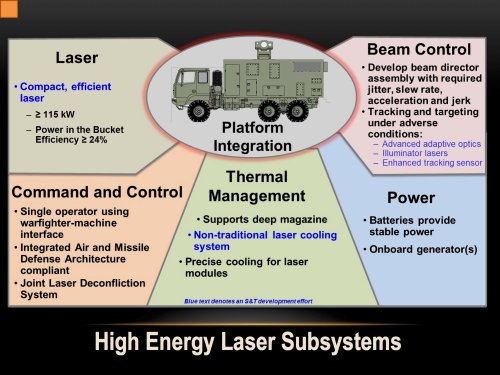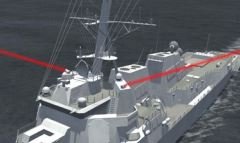You are using an out of date browser. It may not display this or other websites correctly.
You should upgrade or use an alternative browser.
You should upgrade or use an alternative browser.
Army Indirect Fire Protection System and New Guided Missile Program
bring_it_on
I really should change my personal text
- Joined
- 4 July 2013
- Messages
- 3,651
- Reaction score
- 3,781
bring_it_on
I really should change my personal text
- Joined
- 4 July 2013
- Messages
- 3,651
- Reaction score
- 3,781
https://www.youtube.com/watch?v=Zwar09qcUAc
marauder2048
"I should really just relax"
- Joined
- 19 November 2013
- Messages
- 3,157
- Reaction score
- 926
bring_it_on
I really should change my personal text
- Joined
- 4 July 2013
- Messages
- 3,651
- Reaction score
- 3,781
Have Raytheon ever proposed bringing the RIM-116 to land based SHORAD applications?
jsport
what do you know about surfing Major? you're from-
- Joined
- 27 July 2011
- Messages
- 7,713
- Reaction score
- 5,721
marauder2048 said:Hellfire Longbow L7A adds a blast fragmentation sleeve and proximity fuze.
A counter UAS Hellfire Longbow is contractor's dream and that is about all.. about all.
marauder2048
"I should really just relax"
- Joined
- 19 November 2013
- Messages
- 3,157
- Reaction score
- 926
jsport said:marauder2048 said:Hellfire Longbow L7A adds a blast fragmentation sleeve and proximity fuze.
A counter UAS Hellfire Longbow is contractor's dream and that is about all.. about all.
I don't doubt its utility against lows and slows.
bring_it_on said:Have Raytheon ever proposed bringing the RIM-116 to land based SHORAD applications?
Not that I've heard; RAM Block II is ~2X the unit cost of AIM-9X Block II+
Attachments
bring_it_on
I really should change my personal text
- Joined
- 4 July 2013
- Messages
- 3,651
- Reaction score
- 3,781
Not that I've heard; RAM Block II is ~2X the unit cost of AIM-9X Block II+
Thanks. Even though it is more expensive than the Aim-9X, one would think that it could go after a more diverse target set and still come in cheaper than the SLAMRAAM. Perhaps cost is one of the reasons why they didn't bother proposing it for IFPC against a cruise missile threat since Raytheon's competitors are looking at all new missile designs to compete in that space.
marauder2048
"I should really just relax"
- Joined
- 19 November 2013
- Messages
- 3,157
- Reaction score
- 926
sferrin said:Also, they're already playing with AIM-9X in a land SAM role.
AIM-9X Block II has datalink that's in-band with respect to the Sentinel radar.
AFAIK, RAM doesn't have a datalink though Block 2B is supposed to have a missile-to-missile link.
marauder2048
"I should really just relax"
- Joined
- 19 November 2013
- Messages
- 3,157
- Reaction score
- 926
Lockheed Martin Miniature Hit-to-Kill Missile Demonstrates Increased Agility and Affordability
https://news.lockheedmartin.com/2018-01-30-Lockheed-Martin-Miniature-Hit-to-Kill-Missile-Demonstrates-Increased-Agility-and-Affordability?_ga=2.243947340.895923279.1517355198-1242832585.1503775749#assets_20295_128386-117
WHITE SANDS MISSILE RANGE, N.M., Jan. 30, 2018 /PRNewswire/ -- Lockheed Martin's (NYSE: LMT) Miniature Hit-to-Kill
(MHTK) missile successfully conducted a controlled flight test to demonstrate the interceptor's increased agility, and to validate
the performance of its airframe and electronics -- now common between MHTK's two configurations to drive affordability.
Friday's test at White Sands Missile Range, New Mexico, was the first ever for MHTK's updated electronics, and the second for the
interceptor's next-generation airframe. Commonality between the two missile configurations (active and semi-active seeker), and
the increased agility demonstrate MHTK's transformational capabilities to defeat rocket, artillery and mortar (RAM) targets with
greater accuracy, reliability and range compared to current systems. Funded by Lockheed Martin, the successful test advances the
program's technical maturity level and builds confidence in the interceptor's ability to defeat current and evolving threats.
"The U.S. Army and international customers have made it clear that today's global security environment demands agile, close-range
solutions that protect warfighters and citizens from enemy rockets, artillery and mortars. The design of the MHTK interceptor
enables a highly effective solution in a very compact package," said Tim Cahill, vice president of Integrated Air and Missile Defense
at Lockheed Martin Missiles and Fire Control. "This test is exciting because it is another successful milestone demonstrating the
interceptor's revolutionary capabilities. We look forward to building on this success."
Shorter than a yardstick, MHTK retains the range and lethality required of a counter-RAM solution. MHTK uses hit-to-kill
technology, which destroys threats through an extremely accurate application of kinetic energy in body-to-body contact.
Hit-to-kill technology eliminates the incoming threat while reducing the risk of collateral damage seen in traditional
blast-fragmentation interceptors.
The MHTK interceptor is less than 2.5 feet (72 cm) in length and weighs about 5 pounds (2.2 kg) at launch.
The mini missile has the potential to bring miniaturized capabilities to the warfighter with lower costs and reduced
logistic footprints, while opening a world of opportunities for applications of small interceptors.
https://news.lockheedmartin.com/2018-01-30-Lockheed-Martin-Miniature-Hit-to-Kill-Missile-Demonstrates-Increased-Agility-and-Affordability?_ga=2.243947340.895923279.1517355198-1242832585.1503775749#assets_20295_128386-117
WHITE SANDS MISSILE RANGE, N.M., Jan. 30, 2018 /PRNewswire/ -- Lockheed Martin's (NYSE: LMT) Miniature Hit-to-Kill
(MHTK) missile successfully conducted a controlled flight test to demonstrate the interceptor's increased agility, and to validate
the performance of its airframe and electronics -- now common between MHTK's two configurations to drive affordability.
Friday's test at White Sands Missile Range, New Mexico, was the first ever for MHTK's updated electronics, and the second for the
interceptor's next-generation airframe. Commonality between the two missile configurations (active and semi-active seeker), and
the increased agility demonstrate MHTK's transformational capabilities to defeat rocket, artillery and mortar (RAM) targets with
greater accuracy, reliability and range compared to current systems. Funded by Lockheed Martin, the successful test advances the
program's technical maturity level and builds confidence in the interceptor's ability to defeat current and evolving threats.
"The U.S. Army and international customers have made it clear that today's global security environment demands agile, close-range
solutions that protect warfighters and citizens from enemy rockets, artillery and mortars. The design of the MHTK interceptor
enables a highly effective solution in a very compact package," said Tim Cahill, vice president of Integrated Air and Missile Defense
at Lockheed Martin Missiles and Fire Control. "This test is exciting because it is another successful milestone demonstrating the
interceptor's revolutionary capabilities. We look forward to building on this success."
Shorter than a yardstick, MHTK retains the range and lethality required of a counter-RAM solution. MHTK uses hit-to-kill
technology, which destroys threats through an extremely accurate application of kinetic energy in body-to-body contact.
Hit-to-kill technology eliminates the incoming threat while reducing the risk of collateral damage seen in traditional
blast-fragmentation interceptors.
The MHTK interceptor is less than 2.5 feet (72 cm) in length and weighs about 5 pounds (2.2 kg) at launch.
The mini missile has the potential to bring miniaturized capabilities to the warfighter with lower costs and reduced
logistic footprints, while opening a world of opportunities for applications of small interceptors.
Attachments
bring_it_on
I really should change my personal text
- Joined
- 4 July 2013
- Messages
- 3,651
- Reaction score
- 3,781
This is primarily for the CRAM mission. While there may be some residual C-UAS capability clearly they are looking for a Directed Energy insert in IFPC to support that mission.
- Joined
- 3 June 2011
- Messages
- 18,326
- Reaction score
- 12,186
bring_it_on said:This is primarily for the CRAM mission. While there may be some residual C-UAS capability clearly they are looking for a Directed Energy insert in IFPC to support that mission.
Hopefully swarm components won't get tough like mortar rounds and artillery shells. (Though I suspect they will at some point.)
bring_it_on
I really should change my personal text
- Joined
- 4 July 2013
- Messages
- 3,651
- Reaction score
- 3,781
That will also drive their cost and complexity. On the flip side, Lasers are getting better at a fairly fast pace. They are looking at a 50kW Striker based DEW which is a huge leap from the 5kW currently being tested. Similarly, a 100kW+ DEW on an FMTV may possibly enter EMD by 2022-24 after a technology demonstration currently scheduled for FY22. That is some serious power. Once we see these systems in EMD, in my opinion the capacity and capability will increase much more rapidly. To get from 100kW to 200+kW probably won't take as long as it has to get from 5-10kW based systems to 100kW based ones.
- Joined
- 3 June 2011
- Messages
- 18,326
- Reaction score
- 12,186
bring_it_on said:That will also drive their cost and complexity.
They don't need to be as tough physically, as in made out thick metal, but tough as in laser/RF resistant. Also they don't need to be impervious, but if a laser needs to dwell, say 10 seconds to kill a SC, instead of 1. . .
bring_it_on
I really should change my personal text
- Joined
- 4 July 2013
- Messages
- 3,651
- Reaction score
- 3,781
Right. But my point was that the laser weapon is also a moving target capable of some serious scaling. You may have to overcome a 10 or 30 kW laser in 2019 but this may scale to say 115-150kW by mid to late 2020s and closer to 300kW in the mid to late 30s. Moreover, I'm sure with system maturity and tech advances you could develop directed energy weapons with the ability to lase multiple targets simultaneously.
Attachments
- Joined
- 3 June 2011
- Messages
- 18,326
- Reaction score
- 12,186
I keep wondering if they'll ever develop a beam source that pipes the emissions to multiple, independently targetable, emiters. This is what you'd want to do on an aircraft if possible. Have the main emitter up front with lower powered about the aircraft for disabling missiles and enemy pilots. I seem to recall reading there was a maximum you could send along a fiber optic however.
bring_it_on
I really should change my personal text
- Joined
- 4 July 2013
- Messages
- 3,651
- Reaction score
- 3,781
- Joined
- 9 November 2008
- Messages
- 1,070
- Reaction score
- 164
Add Northrop's "Silent Watch' (F-35's EODAS for ships) and you'll have a very capable CIWS.
http://www.northropgrumman.com/Capabilities/SilentWatchEODAS/Pages/default.aspx

http://www.northropgrumman.com/Capabilities/SilentWatchEODAS/Pages/default.aspx

bring_it_on
I really should change my personal text
- Joined
- 4 July 2013
- Messages
- 3,651
- Reaction score
- 3,781
https://www.youtube.com/watch?v=ANgdiqqb3q0
bring_it_on
I really should change my personal text
- Joined
- 4 July 2013
- Messages
- 3,651
- Reaction score
- 3,781
Rapid development, deployment, and support of the Expeditionary Low, Slow, Small Unmanned Aircraft System (UAS) Integrated Defeat System (E-LIDS).
https://www.fbo.gov/index?s=opportu...a47e6b6b867d8b955bd7ce88ca2&tab=core&_cview=0
Rapid development, deployment, and support of the Mobile-Low, Slow, Small Unmanned Aircraft System (UAS) Integrated Defeat System (M-LIDS).
https://www.fbo.gov/index?s=opportu...a47e6b6b867d8b955bd7ce88ca2&tab=core&_cview=0
This is a request for information (RFI)/Sources Sought (SS) only. This RFI does not constitute an invitation for bid (IFB), request for quotation (RFQ), or request for proposal (RFP). The US Government is conducting market research for the rapid development, deployment, and support of the Expeditionary Low, Slow, Small Unmanned Aircraft System (UAS) Integrated Defeat System (E-LIDS).
Background: The US Army has identified a need to develop countermeasures against enemy-armed and intelligence gathering UAS's operating at various speeds and altitudes, which are targeting US interests both at home and abroad.
Interested sources need to demonstrate the technical capability, corporate knowledge, and experience in providing all hardware, equipment, technical expertise, planning, management, manufacturing and testing efforts. This includes all incidental services to develop, produce, integrate, deploy, and sustain the E-LIDS in multiple theaters of operation.
This procurement requires the contractor to operate as a US corporation with a secure manufacturing facility approved to the SECRET level by the Defense Security Service (DSS). Further, the Defense Contract Management Agency (DCMA) will be asked to conduct a pre-award survey of the contractor's facility to determine the capability to successfully fulfill the requirements of this contract and to minimize risk to the C-RAM program.
Rapid development, deployment, and support of the Mobile-Low, Slow, Small Unmanned Aircraft System (UAS) Integrated Defeat System (M-LIDS).
This is a request for information (RFI)/Sources Sought (SS) only. This RFI does not constitute an invitation for bid (IFB), request for quotation (RFQ), or request for proposal (RFP). The US Government is conducting market research for the rapid development, deployment, and support of the Mobile-Low, Slow, Small Unmanned Aircraft System (UAS) Integrated Defeat System (M-LIDS).
Background: The US Army has identified a need to develop countermeasures against enemy-armed and intelligence gathering UAS's operating at various speeds and altitudes, which are targeting US interests both at home and abroad.
bring_it_on
I really should change my personal text
- Joined
- 4 July 2013
- Messages
- 3,651
- Reaction score
- 3,781
M-SHORAD Onboard Sensor Capability
The purpose of this RFI is to determine if there are sources with the ability to deliver and integrate an onboard acquisition, tracking, surveillance, queuing and fire control quality data sensor capability for short range air defense that meets the requirements designated in this RFI. ...
bring_it_on
I really should change my personal text
- Joined
- 4 July 2013
- Messages
- 3,651
- Reaction score
- 3,781
https://www.youtube.com/watch?v=dLR9GL_5afM
- Joined
- 21 April 2009
- Messages
- 13,741
- Reaction score
- 7,650
https://www.defensenews.com/global/asia-pacific/2018/03/19/south-korea-to-deploy-artillery-killer-to-destroy-north-korean-bunkers/?utm_source=Sailthru&utm_medium=email&utm_campaign=Defense%20DNR%2003-19-18&utm_term=Editorial%20-%20Daily%20News%20Roundup
SEOUL, South Korea — The South Korean Army plans to deploy surface-to-surface missiles in a newly created counter-artillery brigade by October, with the aim of destroying North Korea’s hardened long-range artillery sites near the Demilitarized Zone, should conflict erupt on the Korean Peninsula.
The plan is part of South Korea‘s defense reform for developing an offensive operations scheme, a defense source said. The tactical missiles are developed locally.
“The Ministry of National Defense has approved a plan to create an artillery brigade under a ground forces operations command to be inaugurated in October. The plan is to be reported to President Moon Jae-in next month as part of the ‘Defense Reform 2.0’ policy,” the source said. “The brigade’s mission is fairly focused on destroying North Korea’s long-range guns more rapidly and effectively, should conflict arise”
bring_it_on
I really should change my personal text
- Joined
- 4 July 2013
- Messages
- 3,651
- Reaction score
- 3,781
Army to demonstrate precision strike, hypersonics and ramjet capabilities in just a few years
The CFT is looking at “how do we take that chassis that is hopefully going to be at full-rate production in the next couple of months and get ourselves to a better propellant, a better projectile, and a longer barrel — extending from a 39 caliber to a 58 caliber — to be able to not only get on the current battlefield to the 70 kilometer range, but also provide the basis from which either a hypervelocity or a ramjet technology round could get us to very long ranges with cannon artillery,” he said.
bring_it_on
I really should change my personal text
- Joined
- 4 July 2013
- Messages
- 3,651
- Reaction score
- 3,781
ATACMS replacement poised for name change, acceleration
The deeper fight will involve the Precision Strike Missile, part of a plan “to grow a replacement for ATACMS,” which was terminated in 2007 and for which the Army has been conducting a service life extension program. The aim is to achieve a missile with current technology and "the growth to be able to incorporate spiral future capabilities."
"While the program of record is a 'right of [materiel development decision]' program, it is the bus that will enable the CFT's effort, which is in the science and technology realm, to spiral capabilities out," Maranian said.
The program manager has developed "a plan to accelerate the first delivery of this PrSM missile from 2027 back to 2023 -- early '23 -- which is going to enable our science and technology to more rapidly cut in capabilities like cross-domain fires, the ability to hit moved and/or moving targets in both the maritime domain and on land. The ability to use sensor technology to home in on targets for terminal attack, the ability to deliver loitering [intelligence, surveillance and reconnaissance] to a very deep part of the battlefield to help identify targets that we need to service in a denied, degraded or disrupted GPS environment."
Finally, in the long-range fight, Maranian cited Chief of Staff Gen. Mark Milley’s vision of "a strategic capability that is [Intermediate-Range Nuclear Forces Treaty]-compliant, that is able to deliver effects at strategic ranges."
The CFT is "looking at a number of different options" to address this need, Maranian said, "whether that be a very-long-range cannon or a missile that's able to fly in a trajectory that does not violate the INF Treaty."
Attachments
- Joined
- 3 June 2011
- Messages
- 18,326
- Reaction score
- 12,186
bring_it_on said:ATACMS replacement poised for name change, acceleration
The deeper fight will involve the Precision Strike Missile, part of a plan “to grow a replacement for ATACMS,” which was terminated in 2007 and for which the Army has been conducting a service life extension program. The aim is to achieve a missile with current technology and "the growth to be able to incorporate spiral future capabilities."
"While the program of record is a 'right of [materiel development decision]' program, it is the bus that will enable the CFT's effort, which is in the science and technology realm, to spiral capabilities out," Maranian said.
The program manager has developed "a plan to accelerate the first delivery of this PrSM missile from 2027 back to 2023 -- early '23 -- which is going to enable our science and technology to more rapidly cut in capabilities like cross-domain fires, the ability to hit moved and/or moving targets in both the maritime domain and on land. The ability to use sensor technology to home in on targets for terminal attack, the ability to deliver loitering [intelligence, surveillance and reconnaissance] to a very deep part of the battlefield to help identify targets that we need to service in a denied, degraded or disrupted GPS environment."
Finally, in the long-range fight, Maranian cited Chief of Staff Gen. Mark Milley’s vision of "a strategic capability that is [Intermediate-Range Nuclear Forces Treaty]-compliant, that is able to deliver effects at strategic ranges."
The CFT is "looking at a number of different options" to address this need, Maranian said, "whether that be a very-long-range cannon or a missile that's able to fly in a trajectory that does not violate the INF Treaty."
A shame they're replacing ATACMs with a missile of much lower capability when everybody else is going the other direction.
- Joined
- 3 June 2011
- Messages
- 18,326
- Reaction score
- 12,186
jsport said:wait what, did someone say very long range gun.
Attachments
jsport
what do you know about surfing Major? you're from-
- Joined
- 27 July 2011
- Messages
- 7,713
- Reaction score
- 5,721
seems we've seen that pic before.sferrin said:jsport said:wait what, did someone say very long range gun.
- Joined
- 3 June 2011
- Messages
- 18,326
- Reaction score
- 12,186
jsport said:seems we've seen that pic before.sferrin said:jsport said:wait what, did someone say very long range gun.
Because it's awesome.
moonbeamsts
ACCESS: Restricted
- Joined
- 5 March 2010
- Messages
- 44
- Reaction score
- 11
Go BOLO or ORGE!!!
- Joined
- 21 April 2009
- Messages
- 13,741
- Reaction score
- 7,650
https://www.defensenews.com/land/2018/03/20/army-to-demonstrate-precision-strike-hypersonics-and-ramjet-capabilities-in-just-a-few-years/
US should build this proposal from the Vietnam War era.
WASHINGTON — The U.S. Army will demonstrate Long-Range Precision Fires technology from a precision-strike missile to hypersonics and ramjet capabilities within the next couple of years, according to the service’s LRPF modernization team lead.
The LRPF cross-functional team — or CFT — was recently tasked to come up with ways to bring LRPF capability online as fast as possible. LRPF has been identified as the Army’s top modernization priority among six. Each priority was assigned a CFT to tackle modernization plans going forward and will be housed within the Army’s new Futures Command expected to open its doors this summer.
[Modernization reborn: Army pushes for total overmatch]
“There is a real need to modernize our surface-to-surface fires at echelon to be able to guarantee a clear overmatch against any potential adversary both on the modern and future battlefield,” Brig. Gen. Stephen Maranian, the LRPF team lead, told Defense News in a March 19 interview. “To that effort, we are looking at how do we increase our range, how do we increase our lethality and how do we increase our volume of fires, not just in the missile area, but at echelon.”
US should build this proposal from the Vietnam War era.
Attachments
- Joined
- 3 June 2011
- Messages
- 18,326
- Reaction score
- 12,186
"WASHINGTON — The U.S. Army will demonstrate Long-Range Precision Fires technology from a precision-strike missile to hypersonics and ramjet capabilities within the next couple of years, according to the service’s LRPF modernization team lead."
This sounds like they don't know what they want. The "Long Range Precision Fires" is a missile that swaps out one ATACMs for two less capable missiles (much smaller payload) in the same cell. Now they throw in "hypersonics" and "ramjet"? ???
This sounds like they don't know what they want. The "Long Range Precision Fires" is a missile that swaps out one ATACMs for two less capable missiles (much smaller payload) in the same cell. Now they throw in "hypersonics" and "ramjet"? ???
Attachments
- Joined
- 21 April 2009
- Messages
- 13,741
- Reaction score
- 7,650
Time to ditch the INF for conventional missiles.sferrin said:"WASHINGTON — The U.S. Army will demonstrate Long-Range Precision Fires technology from a precision-strike missile to hypersonics and ramjet capabilities within the next couple of years, according to the service’s LRPF modernization team lead."
This sounds like they don't know what they want. The "Long Range Precision Fires" is a missile that swaps out one ATACMs for two less capable missiles (much smaller payload) in the same cell. Now they thrown in "hypersonics" and "ramjet"? ???
Similar threads
-
-
Occupant Centric Platform (OCP) Technology Enabled Capability Demonstrator (TECD
- Started by Triton
- Replies: 5
-
-
-



